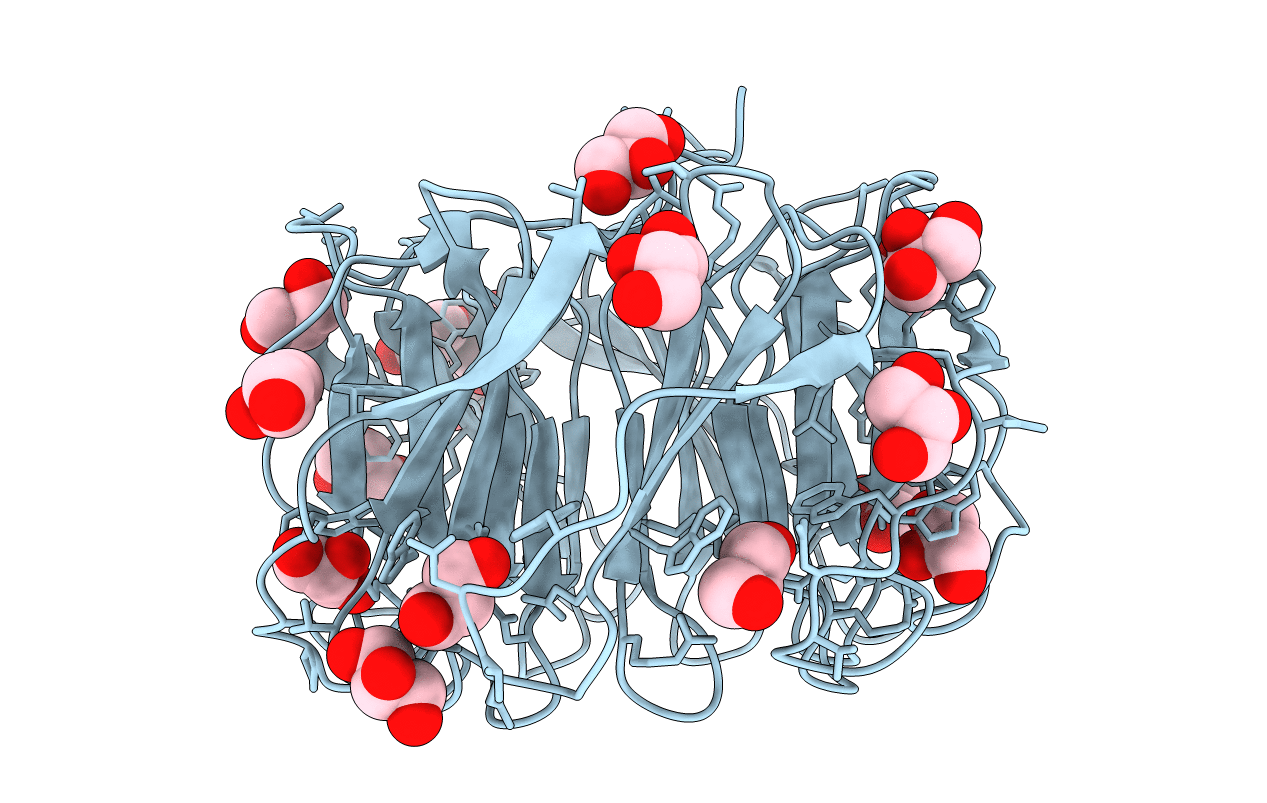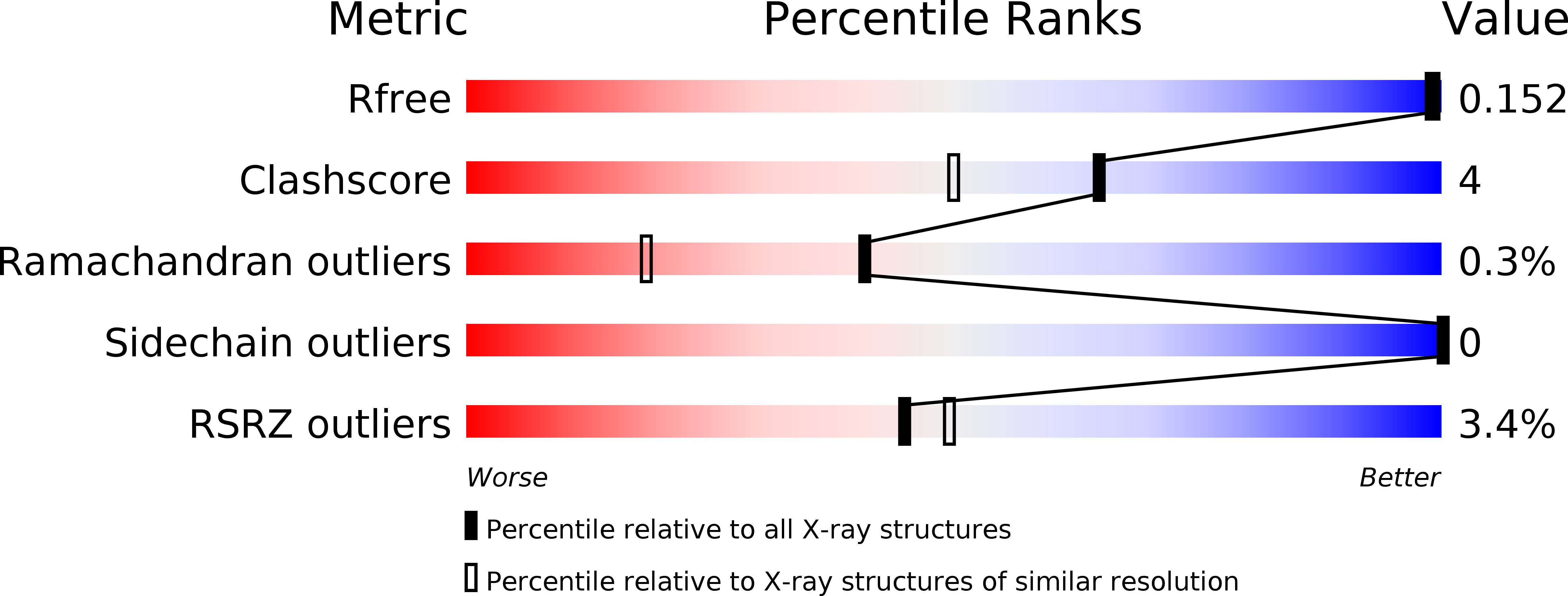
Deposition Date
2015-06-28
Release Date
2016-10-19
Last Version Date
2024-10-16
Entry Detail
PDB ID:
5C9O
Keywords:
Title:
Crystal structure of recombinant PLL lectin from Photorhabdus luminescens at 1.5 A resolution
Biological Source:
Source Organism:
Photorhabdus luminescens (Taxon ID: 29488)
Host Organism:
Method Details:
Experimental Method:
Resolution:
1.50 Å
R-Value Free:
0.15
R-Value Work:
0.13
R-Value Observed:
0.13
Space Group:
I 2 2 2


